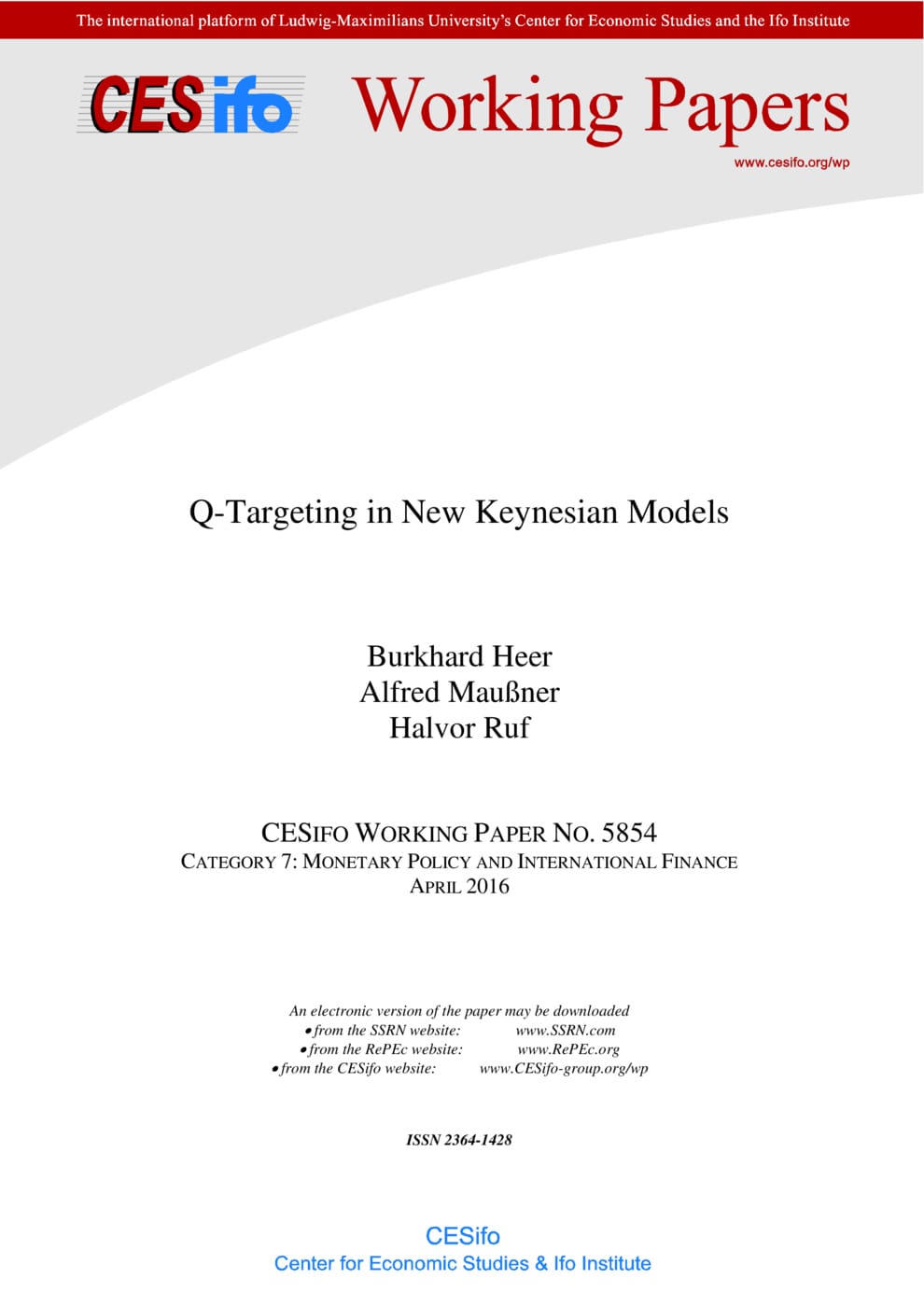Q-Targeting in New Keynesian Models
CESifo, Munich, 2016
CESifo Working Paper No. 5854

We consider optimal monetary policy in a model that integrates credit frictions in the standard New Keynesian model with sticky prices and wages as well as adjustment costs of capital. Different from traditional models with credit frictions such as Carlstrom and Fuerst (1998), the model is able to generate an anti-cyclical external finance premium as observed empirically in the US economy. Monetary policy is characterized by a Taylor rule according to which the nominal interest rate is set as a function of the deviation of the inflation rate from its target rate, the output gap, and Tobin’s q. The latter is measured by the relative price of newly installed capital. We show that monetary policy should optimally decrease interest rates with higher capital prices. However, the consideration of Tobin’s q implies only small welfare effects. These results are robust with respect to a more general Epstein and Zin (1989) welfare specification and to exogenous shifts to both the atemporal marginal rate of substitution between consumption and leisure as well as the households’ discounting behavior.
Monetary Policy and International Finance
Fiscal Policy, Macroeconomics and Growth